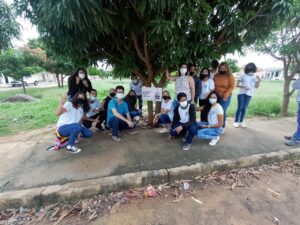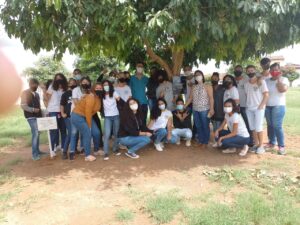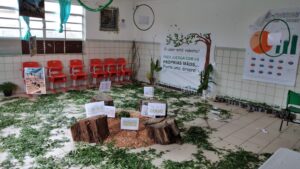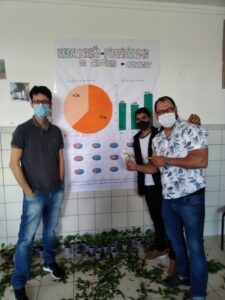News . Best Practices The Bird Refaunation Project of the Northeastern Semiarid of Brazil (Best Practice – Brazil)




This open-scenario practice was carried out during the pandemic by the Teachers Anderson Duarte Vilas Boas, Marcondes Dourado Matos e Renata Dourado Matos, in the Science and Biology discipline, on the theme Rewild Birds at the School of Basic Education – Antônio Carlos Magalhães Municipal School. Students interacted with social scientists, educational researchers, and the local community, including family members. It was supported by UNIVERSIDADE DO ESTADO DA BAHIA (UNEB).
CARE: The Bird Refaunation Project of the Northeastern Semiarid of Brazil consisted of the analysis of the Phyto physiognomy of the caatinga in urban spaces, a practical study; Identification of caged birds in the city of Irecê; Exhibition of the study carried out at the event open to the community, entitled Knowledge Fair; Awareness campaign on the theme addressed in a public square in the neighborhood where the school is located. The focus of the research is to answer the following question: how can the collaborative scientific partnership be co-evaluated by those involved in open schooling for the conception and implementation of curriculum plans in public schools of basic education?
KNOW: The study identified relevant scenarios and collaborative scientific actions to prepare young students to understand the problems of the natural environment caused by man and their consequences for the balance of the planet. The trafficking of wild animals, capture, marketing, and captivity of songbirds was chosen, because it has a strong impact on the environmental balance. The illegal transport, death and mistreatment of the birds that are the majority, many extinct and or threatened with extinction. Aim to show people how understanding the bird’s habit, the contributions given by them to the wild life. This project will help all the members of the group and thus they will all acquire more knowledge in the area.
DO: Activities were developed that were very significant, I can mention:
- analysis of the Phyto physiognomy of the caatinga in the urban environment of the city of Irecê so that we could study the issue of the bird fauna existing in the environment;
- analysis and study, carried out by the students of the ACM school on the birds, of the bird type, found in the caatinga biome and subsequent diagnosis of their existence in the urban environment in the city of Irecê, Bahia.
- identification of bird-type birds used in cages in domestic environments in the city of Irecê, Bahia.
- Decision making on the importance of raising awareness in the school community through an information campaign in the neighborhood where the school is located.
- Conducting an awareness campaign for the school community in a public square. saw. Presentation of the project at the Knowledge Fair explaining the stages of the research to the entire school community
FINDINGS: The open scenario methodology used was project-based collaborative learning. The students brought their own questions, discussed with the scientists and their families, and it was remarkable how much they didn’t know the subject, at the same time they wanted to learn. Teachers found the open teaching activity useful in this controversial topic during the pandemic, and as the school offers teaching by areas of knowledge, it facilitated the planning of actions, the applicability of learning activities targeting technological resources and curricular interaction through of projects.
OUTCOMES: In general, students participated and interacted in learning activities with an interest in learning and discovering curiosities about science. Several students did not know the main scientists and their contributions to planetary life, the great scientific innovations. And all the knowledge built can be evidenced in the written and visual productions distributed on the murals, contemplating all the spaces of the school and the relevance of the study. However, the very social distancing generated by the pandemic period caused many disruptions in the school routine, among which contacted scientists impossible.
Find out more here: our report.